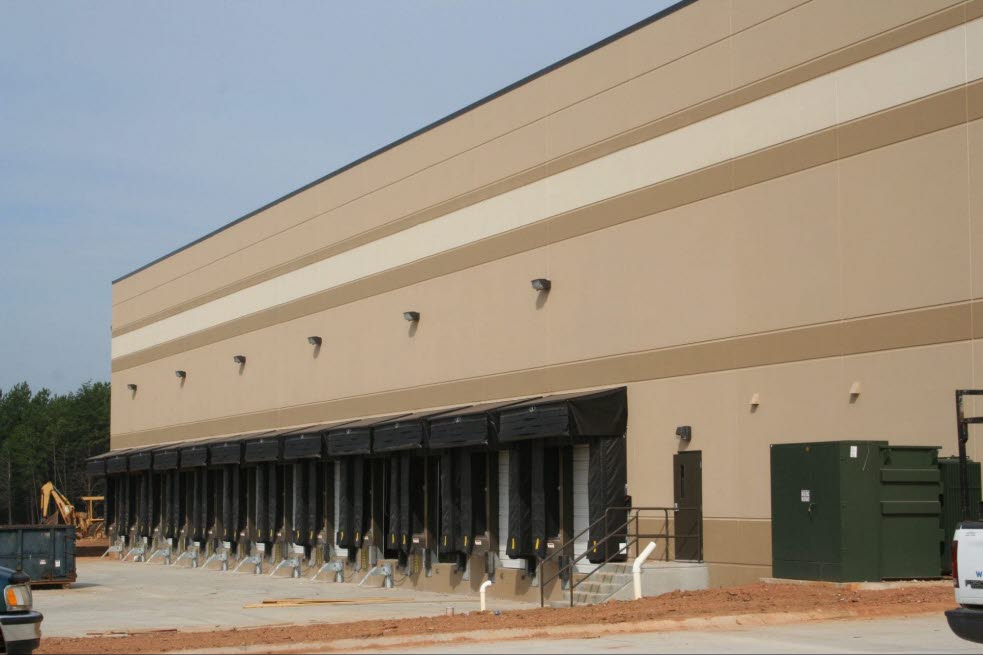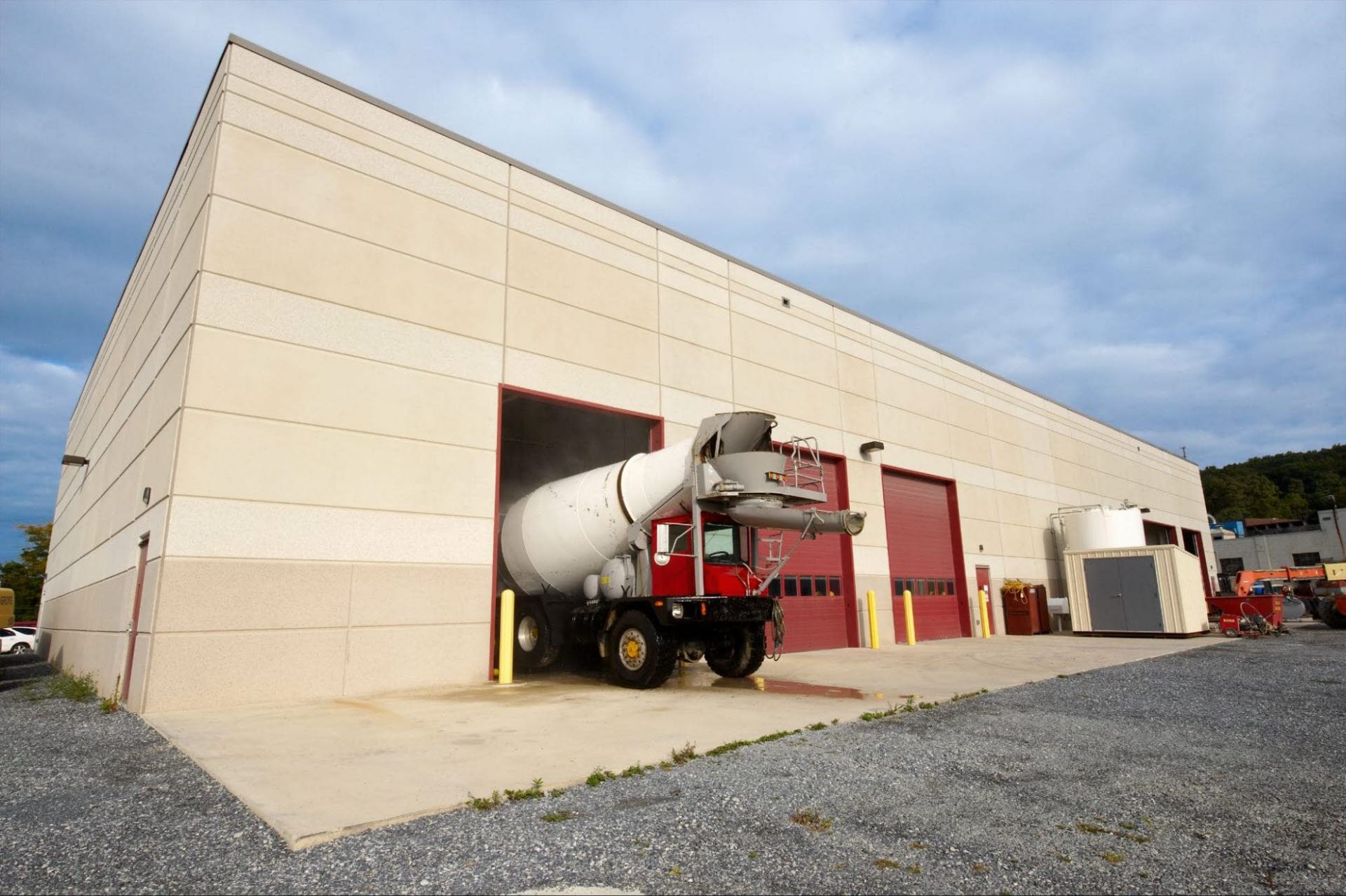Why Build a Precast Concrete Distribution Center

As a key channel of the supply chain, distribution centers need to be efficient and organized. Whether you’re looking to construct an entirely new distribution center or expand on an existing one, the first step to this is finding a building material that is durable, cost-effective, and allows for maximum space utilization.
After reading this blog, you’ll have a better understanding of the benefits of a precast concrete distribution center and how to make the most of them within your construction process.
Different Types of Distribution Centers
A distribution center serves as the connection between the suppliers and consumers, so there are a lot of moving factors within the space. Within a distribution center, you will be performing product mixing, cross-docking, order fulfillment, and packaging.
There are three different types of distribution centers that each emphasize different systems or processes. As you start to design your distribution center, it’s important to note what kind of equipment will be needed to fill the space.
Conventional: This is a traditional type of distribution center that is non-automated and all operations are done by a team of workers. This architectural structure would need to account for your team walking through the warehouse and ample room for them to operate equipment efficiently.
Mechanized: A mechanized distribution system uses various systems to transport and sort materials or inventory. Although that may mean fewer people are transporting through the space, you’ll have to account for easy access to these systems and inventory.
Automated: This type of distribution center is almost fully automated and run by machines and electric systems. With almost all machines within a space, temperatures can heat up easily. You’ll want a building material with an energy-efficient building envelope to ensure things don’t overheat.
Defining the Purpose of Your Structure
The purpose of your distribution center will help determine the blueprint and architectural design. A distribution center is intended to hold your inventory for a short period of time which is then shipped out to the end user.
Ask yourself these questions to help outline your design and structure:
1. What types of products will be stored within the distribution center?
2. Will you have mostly machines doing the processes or will your team have to efficiently flow through the space?
3. Are there must-haves you need to incorporate into the design of your distribution center?

Architectural Aspects of Distribution Centers
With multiple functions happening within your distribution center, it’s crucial you have a clear idea of the layout and blueprint before the project starts. This can be done through a preconstruction design and 3D model.
Modeling allows you to have a better understanding of all the necessary building materials and the estimated costs associated with each material. Additionally, it gives you a cushion to highlight any areas that need to be reworked and adjusted. This ultimately saves you time and money throughout the physical construction process.
The interworkings of a distribution center are critical to its success. Below, we’ll cover three key components and the applicable precast concrete solution.
Operating Aisles
When it comes to distribution centers, the more space the better. The operating aisles of your center help dictate the workflow and how equipment is used. If your aisles are too narrow, your workers and equipment may not be able to move efficiently throughout the space.
Conventionally, wider aisles allow for workers and equipment to move through your inventory. Typically, these are 12 feet or wider so pallets can also go through these spaces. Wider aisles are best for high-traffic areas.
So, when space is limited, how can you optimize what you already have? Precast concrete buildings are constructed with limited interior columns so you can use this to your advantage when designing your distribution center.
With more open floor plans, you can increase inventory loads as well as help with the natural flow of your team and equipment. When things become congested in your distribution center, processes slow down and shipments are delayed.
Storage Options
Although distribution centers are for short-term storage, they can hold a wide variety of inventory. Depending on the purpose of your distribution center, you will need specific temperatures and controls to effectively store your products.
Insulated wall panels provide a high level of thermal efficiency that can retain temperatures within your structure. The building envelope of precast concrete walls absorbs interior heat and ultimately helps your building become more energy efficient.
The functions of warehouses and distribution centers overlap, and it’s possible your distribution center will act as a cold storage facility, similar to a warehouse. If you’re storing items such as frozen foods, produce, or even pharmaceuticals, you’ll need a storage area that can better retain appropriate temperatures.
To even further control the temperature of your storage spaces, you can choose different exterior colors for your precast concrete distribution center. If you choose a lighter color, your structure will have a higher albedo effect and reflect sunlight, whereas a darker color absorbs and retains heat.
Efficient storage solutions ensure your products are properly organized, well-maintained, and in superior condition. This ultimately creates an efficient workflow and guarantees on-time deliveries.
Dock Design
As you’re envisioning your distribution center blueprint, a focal point will be the dock. This is the entrance and exit point and manages the inflow and outflow of goods. In turn, this design has an impact on the profitability of your distribution center.
Ask yourself these two questions to help you understand how many ports to have and the sizing of each.
- How many shipments are going through your center daily?
- Do the shipments vary in size?
Ports and docks require a lot of machinery and vehicles and therefore create a lot of fumes that can be potentially hazardous to your team. Part of the dock design is incorporating sufficient ventilation systems for these fumes.
Additionally, docks are open to the environment and must be durable in a variety of conditions. Precast concrete is fire and moisture-resistant so you can feel confident that the structure will stay intact through it all.

How a Precast Concrete Building Benefits Your Organization
We’ve briefly discussed some precast concrete solutions for your distribution center but there are even more benefits for you when you choose this building material. Other than retaining sufficient temperatures, your precast concrete distribution center can be ready for market quickly, cost-effective, and sustainable.
Fast to Market
Unlike traditional construction methods, precast concrete buildings can be produced year-round since they are constructed in a controlled environment. This eliminates the risk of delays from harsh weather conditions and uncontrollable hindrances.
In the construction world, time is money. So, when unexpected delays come, it’s likely to cause you to go over budget along with not getting your building up in time. A controlled environment means there’s a systematic process that allows for quicker construction.
The installation process is also much quicker. Once the project is ready, 12 to 16 precast components can be placed during the day. Ultimately, precast concrete solutions provide a simplified and systematic process for your distribution center construction.
Cost-Effective
The way costs are allocated on precast concrete buildings allows you to put more of your budget toward your physical structure rather than transportation and site logistics. Consider how much money you’d save just in labor costs by choosing a building material that reduces the number of on-site workers.
In conventional construction budgets, labor can be as much as 40% of your total budget. In comparison, looking at a precast concrete budget, labor consistently accounts for 26% of your total product budget. The product budget itself accounts for about 60% of your total budget.
Along the same lines, transportation costs are a fifth of your total budget. The installation process of precast concrete buildings is quicker and requires less transportation of various materials. Panels will come already assembled, so transportation costs will be significantly less.
Build More Sustainable
Distribution centers are an integral part of the economy and supply chain. But what if they also served the community and future generations as well? As you’re considering what building material to use for your new structure, consider one that is durable and contributes to a greener environment.
As stated earlier in the blog, precast concrete building systems have high thermal efficiency which means lower utility bills each month and less energy consumption.
Throughout the construction process, there is also less waste because the construction is done in a controlled setting. Not only does this mean fewer materials are going to the landfill, but it will also save you money on unused products.
Typically, at precast concrete facilities, 95% of the unused materials can be recycled or reused for another project.
Additionally, precast concrete buildings can be easily disassembled or rearranged to allow for site expansion. Because your company shouldn’t have to demolish and restart a building project when you need to grow.
Learn more about the possibilities of a precast concrete distribution center.

